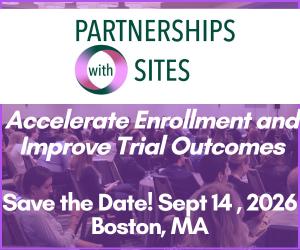How to Improve Diversity in Clinical Research, from Mass General Hospital
Jonathan Jackson, PhD, discusses his work as Founder and Executive Director at the Community Access, Recruitment, & Engagement (CARE) Research Center, identifying and overcoming the barriers of access and participation for underrepresented communities in clinical research. The Center is based in Massachusetts General Hospital and Harvard Medical School.

A common thread in your work has been connecting people to clinical trials. Was that the focus in founding the CARE Research Center?
The impetus behind the CARE Research Center is probably not so different than what drives CRAACO, which is the idea that clinical research today represents really best-case scenario when it comes to availability of clinical care or clinical research opportunities. So that is to say, clinical research today really represents the future treatments for tomorrow, especially in late-stage clinical research design like a Phase III study.
We had a huge diversity and inclusion problem when it came to clinical trials in the research domains that I was interested: Alzheimer’s disease, neurology and cancer. One of the major throughlines for me was recognizing that when it came to diverse populations, many people simply weren’t aware and they simply were not asked about the opportunity to participate in a clinical research study.
The truth of the matter is that for more than 90% of clinical research participants, you have to know somebody actually running the study in order to get involved.
That seems like a huge, almost unethical problem, in terms of the availability of research options and clinical research, specifically in the absence of any kind of formalized or standard-of-care therapies.
I started the CARE Research Center because I recognized that this problem wasn’t specific to any one disease area or any one trial type. And over the last few years, we have made inroads into trying to make clinical research much more accessible. And honestly, one of the easiest ways that anyone can do it is to simply offer it as a care option alongside standard of care.
How are you, in your work, bridging the gap between care and research?
We work experimentally. We actually develop and execute our own independent research projects that look at optimizing these sorts of things.
It turns out that the problems are usually multifold and multifactorial, depending on the research studies, the trial design, the area in question and the population that’s trying to be reached.
There are lots of different variables that impact whether people participate in research studies or not. Sometimes it really just is a matter of standardizing the question of research participation within a clinical workflow, and you don’t have to worry about materials. Other times you have to educate frontline clinicians, individuals in community health centers. Usually it starts with trying to make sure that all stakeholders are on board with the value of participating in a clinical research study.
Do you see any innovations or technologies that could help us achieve that?
There are lots of different ways of doing it. The era of big data is going to be a larger driver of what is possible in the years to come. There’s also decentralizing some of these trials, virtual trial participation, passive data collection, flexible, pragmatic clinical trial designs.
All of these have the potential to open up the diversity and overall participation of the population to clinical research, but we do need to be very thoughtful in how we implement these things. Because, historically, when we just kind of drop a new design style or a new technology into the space, it doesn’t tend to be uniformly adopted or included; it doesn’t tend to be done in a way that is equitable or inclusive. These things have the potential to revolutionize how we recruit for clinical research studies.
But we do need to be thoughtful, to make sure that we’re not leaving a large portion of the population behind. We can’t blindly trust that these technological improvements will solve the problems that we built into the system.
"When it came to diverse populations, many people simply weren’t aware and they simply were not asked to participate in a clinical research study."
You’ve used the phrase, “Let’s improve science by making it truly accessible.” What does that mean, and how do we go about it?
Just a small case-in-point is thinking about the way that we have historically studied heart disease. Historically, the ways that we have characterized a heart attack, myocardial infarction or any kind of cardiac-related event, – the symptoms, the progression, recovery rate – have all historically been done on cisgender men.
And they tend to be white, cisgender men who are relatively wealthy, already connected to the health system, overeducated and live in urban centers along the East or West Coast of the United States.
It turned out that once we started looking at cardiac events in cisgender women, it completely changed the way that we understood the cardiovascular system in humans. The symptoms look different, rates of progression and recovery from myocardial infarction, heart attacks, anything like that. They’re fundamentally different in women than they are in men.
It turns out that by understanding what heart disease looks like in both women and men, not only can we better serve women but we can better serve men too, because we now understand what’s important in terms of classic symptom presentation. We can understand what’s important in terms of what sorts of cardiovascular systems that we can go after when it comes to developing new therapies that serve men better but also generalize to women.
By being inclusive, and by making sure that research designs are accessible, we will definitely gain a better understanding of the diseases that we’re trying to address, any kinds of disorders. We’ll also gain a better understanding of the therapies and the devices that we’re trying to test.
We know that 20% of drugs and devices that are approved by FDA have some kind of differential level of expression or efficacy on the basis of race alone. These are the things that clear FDA Stage I, II and III. They’re already out in the wild in the Phase IV long-term study. We see there that we don’t necessarily have a clear understanding of how these drugs and devices are going to perform out in the wild. In addition to the diverse elements or the accessible elements helping us understand the future of medicine and theories of disease.
It also can potentially serve very practical purposes. It can drive down cost and drive down uncertainty when it comes to biopharma companies investing in these drugs and devices that may fail at Phase II or Phase III, or they may be approved but then be shown to be less effective than we thought when it’s disseminated out into the world in a Phase IV long-term monitoring, post- approval stage.
Ultimately, if you look across disease areas, if you look even outside of the clinical research sector, when we design our system to be more accessible, inclusive and diverse, we end up gaining a richer set of knowledge that is more effective. That reduces uncertainty and it improves our statistical, and thus our scientific, rigor.
The idea is that the first group to systematically crack this problem will stand to benefit heads and shoulders above any kind of competitor, if you’re in private industry. Any other kind of scientific question, I think within 10 years, that does not appreciably take these into consideration will not be considered to be robust or valid. In my opinion, the future is diverse because that is where we can really start to reduce uncertainty with the methods that we already have, and then look towards innovation for the future.
"Ultimately, if you look across disease areas, if you look even outside of the clinical research sector, when we design our system to be more accessible, inclusive and diverse, we end up gaining a richer set of knowledge that is more effective."
You also do a lot of work with Alzheimer’s disease. Have you incorporated any clinical research as care in that space?
We’ve done a very, very small amount; I’ve participated in many clinical trials and led them here in Boston and around the country. What we have recognized in the Alzheimer’s space is that it’s easier to prevent Alzheimer’s than it is to cure it once it’s already present. Obviously that’s true of many diseases, but we didn’t have that as an option for Alzheimer’s until the last five years or so.
And so the field itself is having to transform and change where we are not quite collectively considering prevention, or secondary prevention, of Alzheimer’s disease as a care option, but in trying to drive overall recruitment, as well as diverse recruitment, we recognize that by implementing a workflow where research participation is presented during routine clinical care appointments, effectively making it a care option.
We see that research sites that embrace this model have effectively insatiable demand for research participation. They tend to have diverse populations represented in their studies; they tend to have great retention; they tend to finish recruitments on or ahead of time. We see that they tend to have study results – this is very early data – that generalize better to the population, which gives us more confidence in how we understand the disease.
I wouldn’t say that Alzheimer’s is quite to the care option stage yet, but by making it a regular part of the clinical workflow, we are seeing that we have a better grasp and understanding of the disease than we did previously.
Is there anything else coming down the pipeline that you think will aid in the larger conversation about bringing care and research together?
Thinking about data privacy and data security is going to be the next major hurdle. The model that I’m most excited about to address this is the community IRB model, where entire communities can review, triage and make final decisions about how their data are organized and kept. This model has had a lot of initial success in the tribal communities, especially in Alaska. It’s becoming more popular even in urban environments, where there is a high concentration of racial or ethnic minorities.
It brings equity to the table in a way that protects the rights and the empowerment of individuals and communities; they’re not just passively giving up their data to large, academic institutions, who promised up and down that they’ll be responsible with it. We’ve seen over and over again that that’s not quite the case.
It offers an opportunity to potentially revolutionize where data are kept, how those data are protected and stored and commodified. It means that communities will have much more of a say in how those data are leveraged and used. My hope is that in the long-term, it will create a strong economic marker for these things, whereby communities can directly benefit from participating in these research trials, rather than the vague hope of contributing to future research. My hope is that we can make this a much more viable model for economic investment by commodifying data privacy and security.
To learn more about Clinical Research as a Care Option, visit CRAACOevent.com.







